












8 • Networking
GCX’s Jonathan Wright explores how modern networking solutions can help the public sector scale.
10 • Emergency Lighting
Zumtobel Lighting’s Ed Haslett explains how centralised lighting systems and proactive monitoring can enhance data centre safety.
12 • Power
Conrad Energy’s Steven Hardman on why data centres should look to on-site or near-site energy generation to ease the energy burden.
14 • Sustainability
iomart’s David Gammie outlines some methods to improve the sustainability and efficiency of today’s data centres.
16 • Cloud Computing
Six Degrees’ Reece Gohil gives insight into understanding the role of hyperscale architecture in a hybrid cloud strategy.
18 • Heat Reuse
Mitsubishi Electric’s Shahid Rahman explores how heat reuse can revolutionise data centre efficiency.
20 • Battery Power
EnerSys’ Michael Sagar explains how lead-acid batteries can support the environmental goals of data centres.
22 • Data Management
Cloudera’s Paul Mackay shares how data is changing lives across the globe.
25 • Final Say
Pulsant’s Nav Uppal highlights the importance of taking a people-centric approach to digital transformation.





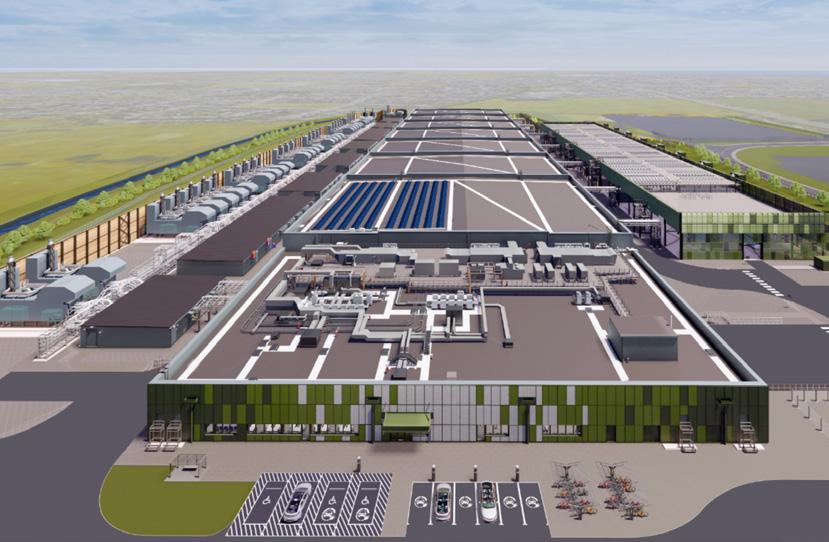
It’s been discussed at length, but it bears repeating – data is the hottest commodity right now, and increased demand for it is outpacing the capacity available.
Giants like Google and Microsoft – among others – have all announced plans to develop new data centre sites across Europe, and this is just the start. Growth is predicted to continue throughout the year and into the future as technology such as AI and HPC become an increasing part of our lives.
So while the sector gears up to scale to meet this demand, it is of course facing increasing scrutiny to meet regulatory requirements, on everything from sustainability to data security.
Add to this the overwhelming demand on the grid – not just from data centres – and the question of how we will power the next generation of facilities also rears its ugly head. The IEA has predicted that electricity consumption from data centres, AI and cryptocurrencies could double by 2026 – so what will that mean for power supply?
It’s a daunting prospect to not only keep all these plates spinning in the air, but to also be having discussions about how to futureproof the sector for whatever the next few decades has in-store.
Nevertheless, this sort of forward planning is crucial, as data centres are the backbone of the digital age that we are living in.
That’s on a macro scale – on the micro scale, here at DCR HQ, we’re gearing up for this year’s Critical Insight, which will explore these key issues in depth.
If you want to get involved – whether to speak, sponsor or just find out what’s going to be on the agenda – keep your eyes peeled on critical-insight.co.uk for updates about this year’s event.
As always, please reach out with any questions and comments –you can drop me a line at kayleigh@datacentrereview.com, and find us on X (@dcrmagazine) and on LinkedIn (Data Centre Review).
Kayleigh Hutchins, Editor
EDITOR
Kayleigh Hutchins
kayleigh@datacentrereview.com
CONTRIBUTING EDITOR
Jordan O’Brien
jordano@sjpbusinessmedia.com
DESIGN & DIGITAL PRODUCTION
Rob Castles
robc@sjpbusinessmedia.com
GROUP ACCOUNT DIRECTOR
Sunny Nehru
+44 (0) 207 062 2539 sunnyn@sjpbusinessmedia.com
BUSINESS DEVELOPMENT MANAGER
Tom Packham
+44 (0)7741 911 317 tomp@sjpbusinessmedia.com
GROUP COMMERCIAL DIRECTOR
Fidi Neophytou
+44 (0) 7741 911302
fidin@sjpbusinessmedia.com
PUBLISHER
Wayne Darroch
PRINTING BY Buxton
Paid subscription enquiries: subscriptions@datacentrereview.com
SJP Business Media
Room 4.13, 27 Clements Lane London, EC4N 7AE
Subscription rates: UK £221 per year, Overseas £262
Data Centre Review is a controlled circulation monthly magazine available free to selected personnel at the publisher’s discretion. If you wish to apply for regular free copies then please visit: www.datacentrereview.com/register
Data Centre Review is published by
Industry-leading b2b technology brands
Room 4.13, 27 Clements Lane London, EC4N 7AE 0207 062 2526
Any article in this journal represents the opinions of the author. This does not necessarily reflect the views of Data Centre Review or its publisher – SJP Business Media ISSN 0013-4384 – All editorial contents © SJP Business Media
Follow us on X @DCRmagazine
Join us on LinkedIn


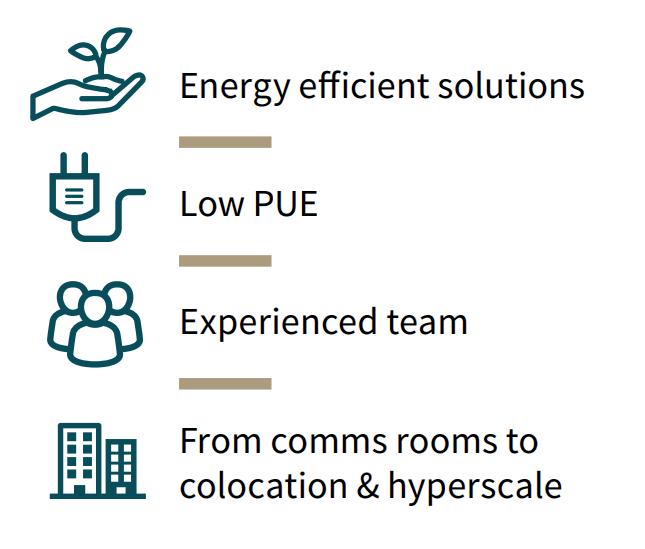

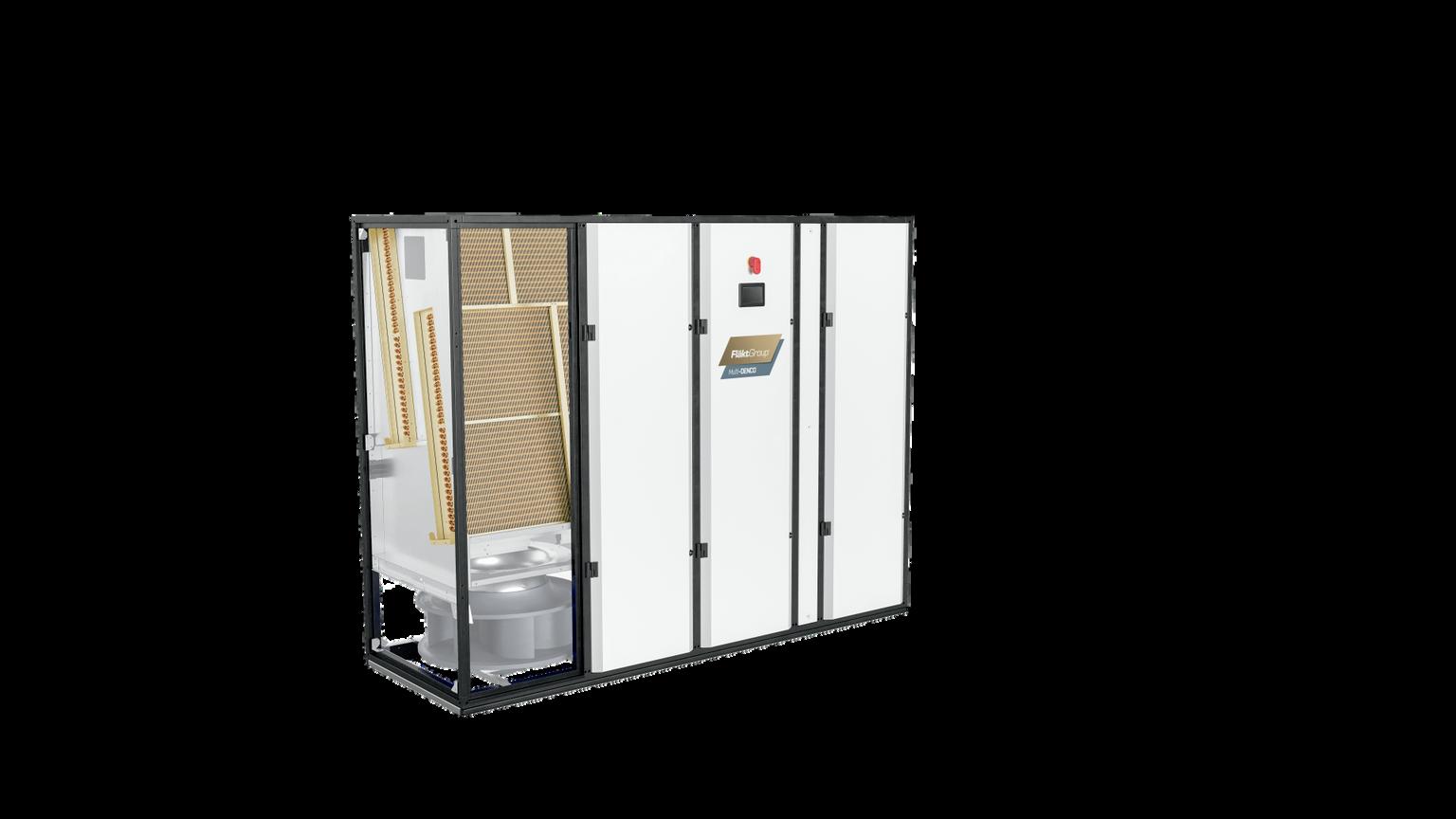
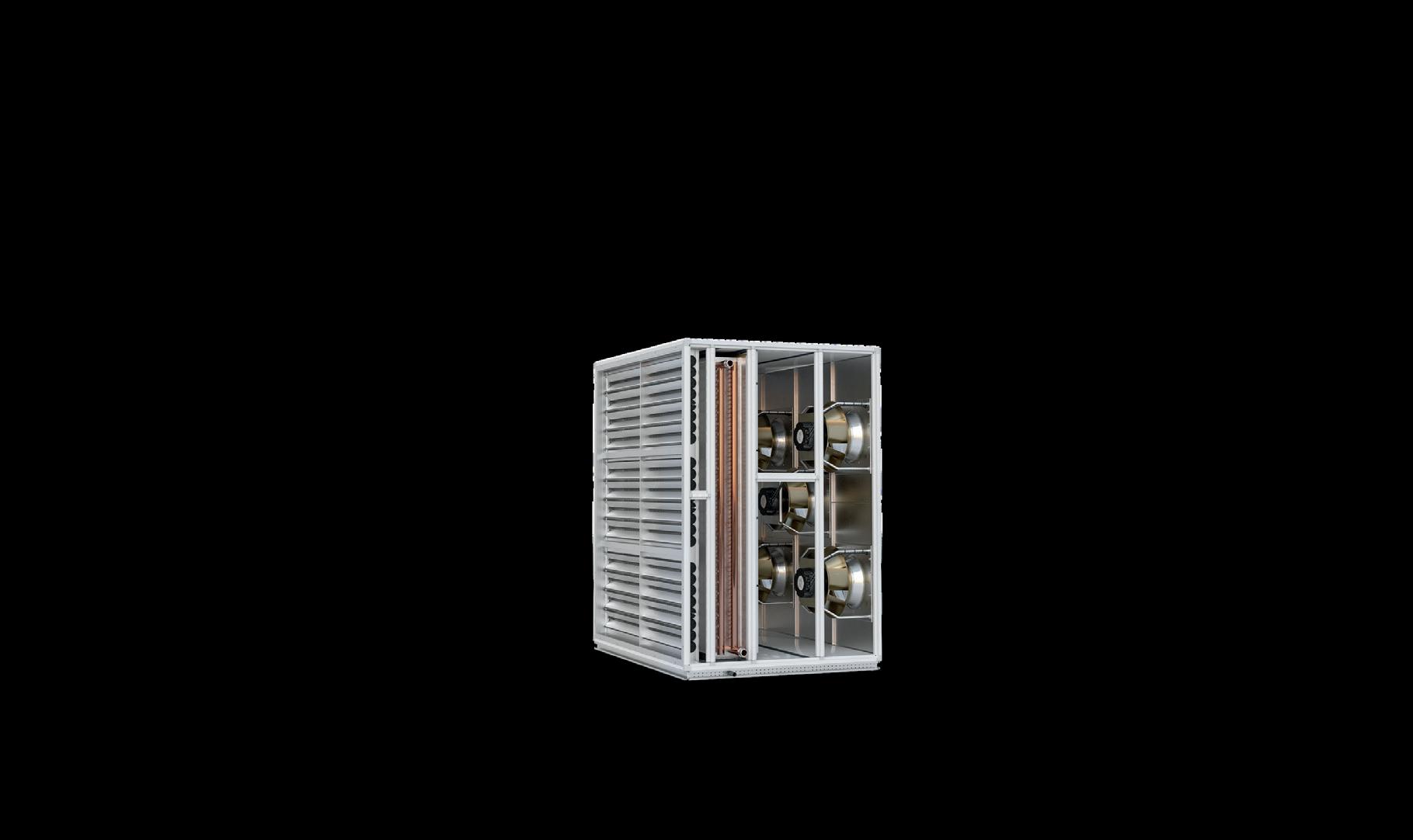

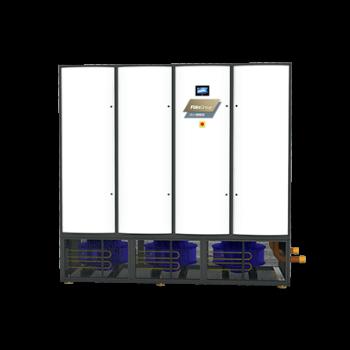
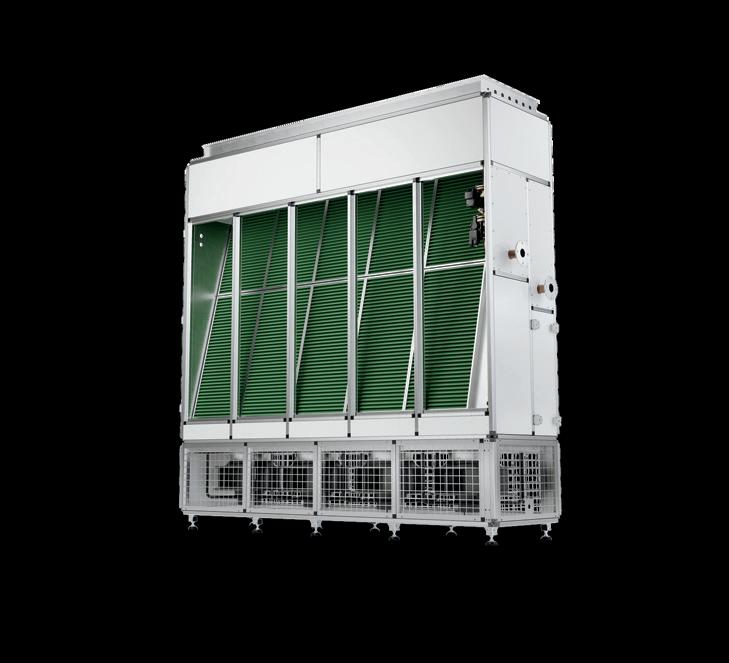


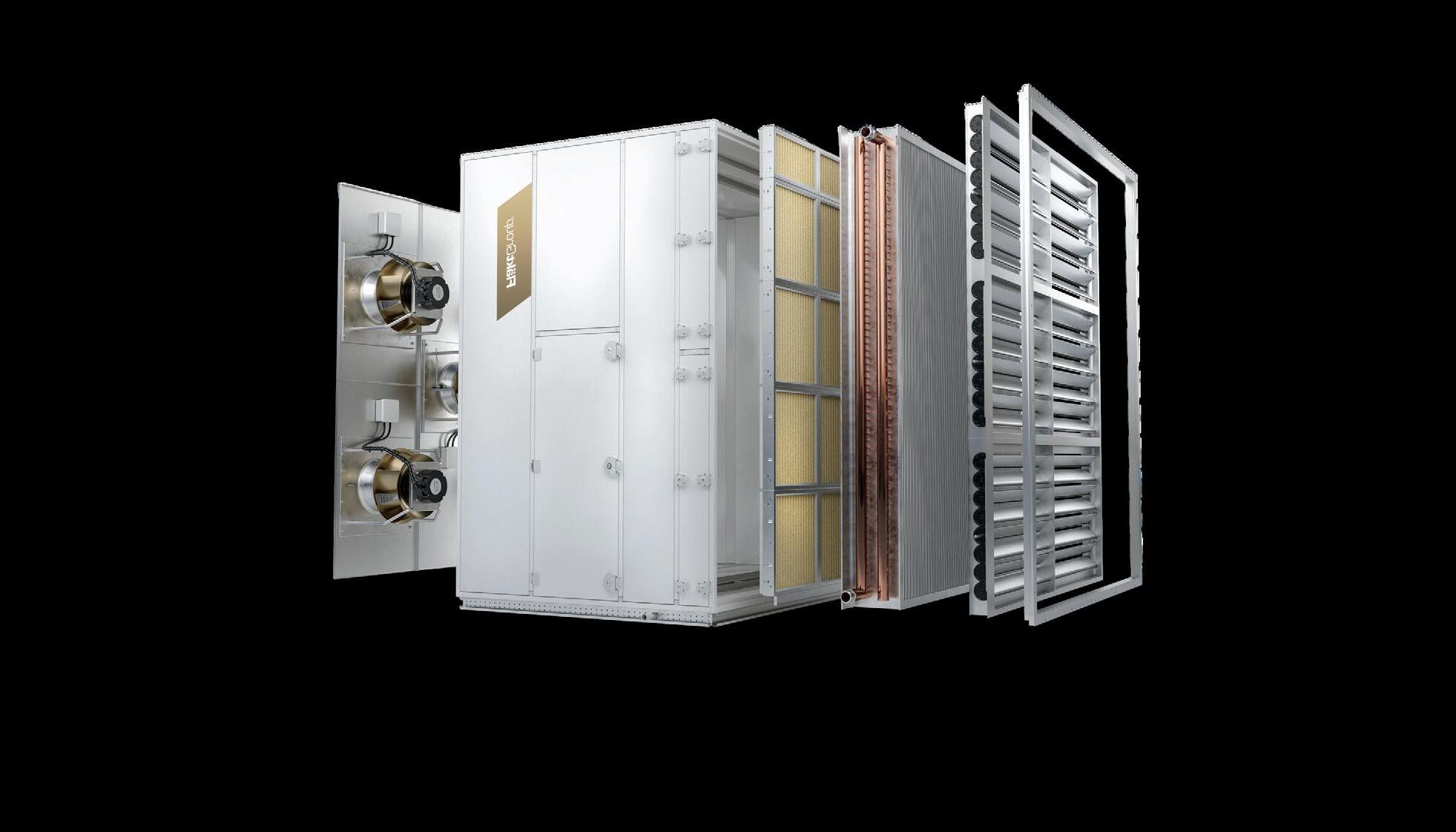

nVent explains how equipping the right CDUs is vital in powering the next generation liquid cooling that will be the backbone of the data centres of the future.
Liquid cooling does not need to be all or nothing. Data centres can consider cooling a single rack or a small set of racks where AI and machine learning applications are housed without deploying full scale data halls that are liquid cooled and support rack after rack of equipment running high performance computing solutions.
However, when implementing these spot solutions, understanding future business plans is critical. Using dedicated cooling solutions to solve a unique problem is important, but due to cost, energy efficiency and other factors, a solution for one problem may not be the solution for another. As with all data centre projects, different challenges require different solutions, and a one-size-fits-all approach rarely succeeds.
With the growth in demand for high performance computing (HPC) driven by the expansion of AI, data centre managers
need to have a plan in place to scale their cooling solutions. This may mean planning next generation data centres to be fully liquid cooled, or exploring hybrid liquid to air solutions, such as rear door cooling or directto-chip CDUs, that bring liquid cooling to the rack and chip level while operating within air-cooled infrastructure.
The biggest advantage that planning for the future and understanding IT workloads will bring is the realisation that almost all potential cooling solutions can be built out in combinations, allowing data centre managers to match their power and cooling capabilities with shifting demands. The key to sustainable growth is a variety of flexible options for supporting the next-generation equipment. Liquid cooling technologies help drive that flexibility.
Unpacking CDU motors: It’s not just about redundancy
Liquid cooling is here. Next-generation chips
and other AI infrastructure need more efficient cooling methods to keep them from overheating. Today, many data centres implement solutions that remove extra heat by increasing air volume or reducing air inlet temperatures, which can be inefficient and costly to run. When air cooling systems must work harder to maintain optimal temperatures, facilities can also face equipment breakdowns, unexpected shutdowns and increased energy costs.
For many data centres, using liquid cooling technologies can offer better performance while reducing energy use and helping data centres operate more efficiently. For the most advanced applications, liquid cooling is the only possible option. By using liquid cooling technologies in the right way, data centre managers can greatly improve Power Usage Effectiveness (PUE), even in applications where they are using nextgeneration IT.
A critical part of any liquid cooling system is the coolant distribution unit, or CDU. The CDU acts as the ‘heart’ of the liquid cooling system, pumping cooled fluid through racks at an appropriate rate for the cooling needs of the system. CDUs need to dynamically respond to the cooling needs of IT by changing the rate at which fluid flows through the system. However, there are a few methods of controlling CDU pumps. Each method has benefits and drawbacks.
There are two main types of drives used in CDU pump motors: variable speed drives (VSDs) and variable frequency drives (VFDs). Both adjust the speed that motors run to respond to the cooling demands of IT systems, circulating liquid through the system at different rates. However, there is a key difference between them.
VSDs manage motor velocity using amperage and voltage, supplying less net input voltage when the motor doesn’t need to run as fast. This is achieved by rapidly cycling the pump on and off to achieve the desired pump speed. VFDs present an interesting alternative to this method, using voltage and frequency instead of amperage to control the motor’s operation. Using voltage and frequency together allows greater control over a motor’s speed and torque, helping motors last longer while minimising energy waste.
VFDs also work better and retain efficiency better than VSDs when motors are running
at lower capacity. Additionally, VSDs can introduce harmonic distortion into systems that affect power quality for cooling systems. They can also overheat when operating at reduced speeds, which can necessitate extensive maintenance and potential down time.
For these reasons, data centres that require constant uptime should consider CDUs with VFD motors. Data centre managers also need to ensure their CDU motors are concurrently maintainable, meaning they can be replaced without the CDU going offline and interrupting the liquid flow to the IT equipment. While redundancy is always important for CDU motors, the reliability of VFD motors means that fewer redundancies might be necessary for VFDs than VSDs.
While data centres require 24/7 uptime, adding multiple redundant motors can add failure points to a cooling system and running many pumps simultaneously hurts the partial PUE of the system. An alternative approach is to have one pump that can do all the cooling and one backup to pick up slack in case of maintenance issues.
Both VFDs and VSDs allow for varying flow rates of a pump – but with VSD control, pump voltage is cycled rapidly to get the desired speed. This can create large current spikes affecting system power quality and, in some cases, can create large fluctuations in liquid pressure that need to be managed with
additional diaphragm or bladder expansion tanks. To compensate for this, CDUs with VSD controlled motors often have additional pumps added not just for redundancy but to ensure that cooling demands are met over a wide liquid flow operating range. Operating more pumps than necessary, in many cases, leads to inefficiency in power consumption and increases the overall failure domain of the solution.
In addition to the motor type, data centre managers should look at the coupling methods within CDU pumps. Magnetically coupled pumps with VFD motors are extremely unlikely to leak and are very reliable, minimising the need for multiple redundancies and lowering energy use. When pumps are magnetically coupled, as opposed to mechanically sealed, components can be physically separated, minimising mechanical vibrations and preventing wear and tear. Additionally, the separation between the drive shaft and pump components allows for a completely sealed enclosure on the pump’s liquid end. This removes another potential failure point by eliminating the need for a mechanical seal between the motor drive shaft and liquidcarrying components.
Equipping a data centre with the right CDUs to power next generation liquid cooling is critical to the functioning of future data centres. Examining motor control and coupling methods for CDU pumps is just one piece in a complicated equation, but it should not be ignored, because when the liquid stops flowing, the IT equipment shuts down.
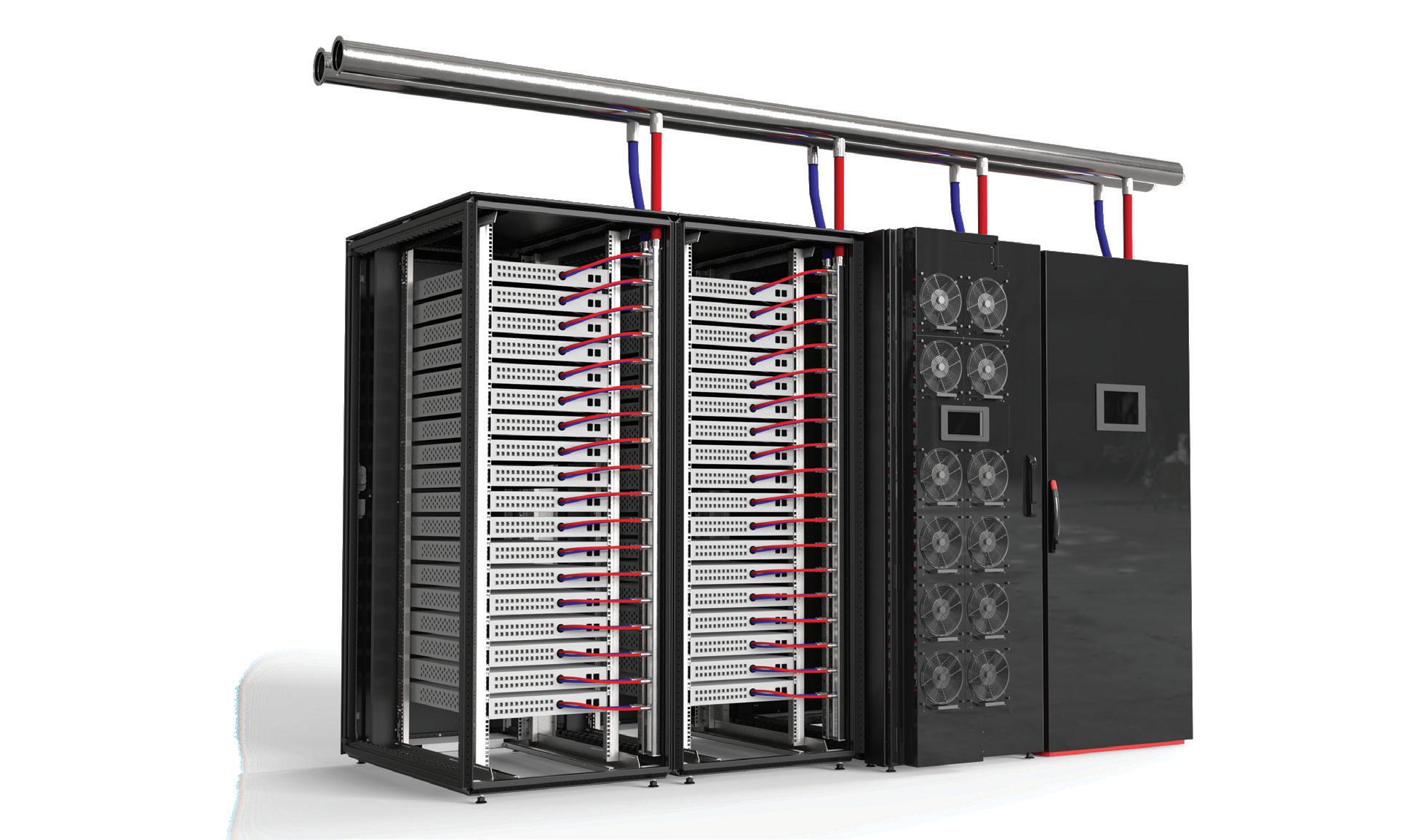

 Jonathan Wright, Director of Products and Operations at GCX, explores
Jonathan Wright, Director of Products and Operations at GCX, explores
how modern networking solutions can help the public sector scale.
The public sector has been slow to meet the demands of digital transformation. According to the National Audit Office, outdated IT systems and ageing data are key sources of inefficiency in public services. As the volume of available data continues to grow, along with the number of applications for which its analysis can prove valuable, the public sector needs to adopt the latest advancements in network overlay technologies to scale securely.
In the public, as in the private sector, data is the lifeblood of the modern workplace. Combining self-created data sets with external data can enhance the output of data analytics, helping public sector agencies simplify processes, such as reducing hospital waiting times, optimising the timing of public works, and changing the routes of refuse lorries. Firstly, that data must be collected – whether that’s directly from existing systems or by remote IoT sensors – and sent, via Wi-Fi, to a building collector, before moving over a network connection to a data lake from where it can be analysed to provide the necessary valuable insights.
It goes without saying, of course, that the quality of that connection is critical. Carrier networks have improved over the years. Advancements in software-defined networking, for instance, have made network solutions easier to deploy and use alongside underlying technologies such as broadband, fibre and 4G. Combining cheap network bandwidth and highcapacity delivery options like 5G with new security protocols means public sector technology solutions can scale rapidly for new sites, services and users.
At the same time, the growing migration of applications to the cloud has seen increased levels of SD-WAN adoption, as organisations look for ways to strengthen connectivity, reduce costs, and gain greater control and visibility of their networks. However, the growing use of IoT sensors and the shift to hybrid and remote working practices means that SDWAN is no longer suitable for the flexible models sought by public sector organisations today.

Originally tasked with optimising application traffic for a better user experience, SD-WAN is primarily an on-premises network access technology – and so, at odds with today’s ways of working. Not only is SD-WAN unable to scale (although it may have been considered secure for use by office-based businesses) it also fails to provide consistent security for employees using external devices or working from remote locations, and also for the important IoT sensors used to collect data.
Its authentication process means networks that rely on SD-WAN will have limited visibility over subscribers’ traffic and behaviour, hampering an organisation’s ability to detect threats. Each device added to the network represents another entry point that could be exploited by cybercriminals. In today’s increasingly sophisticated threat landscape, this simply isn’t sufficient.
Many organisations have invested a great deal of money in SD-WAN, though, and will therefore be reluctant to abandon it. The good news is that, by implementing new overlay technologies like Secure Access Service Edge (SASE) over their existing SD-WAN infrastructure, they don’t have to.
With stronger security features including Data Loss Prevention (DLP), a cloud-centric security framework like SASE builds on SD-WAN
The growing use of IoT sensors and the shift to hybrid and remote working practices means that SD-WAN is no longer suitable for the flexible models sought by public sector organisations today
by providing end-to-end protection, making it equally as effective as enforcing security on remote endpoints as it is on office-based devices.
With enhanced security – on every device, regardless of its location –and with improved visibility over network performance, SASE solutions allow public sector organisations to enjoy greater flexibility, and scale to meet the growing demands on their networks. But these aren’t the only benefits they represent. By merging network and cybersecurity solutions into a single, more controllable stack, they help ensure that an organisation’s network budget is more accurately spent.
It’s true that many network solutions already deliver cybersecurity solutions as part of a single stack. But, while they can offer best-in-class security solutions such as DLP, Endpoint Detection and Response (EDR) and Security Information and Event Management (SIEM), they are rarely managed effectively. Sensible integration is required to avoid the possibility of gaps in vulnerabilities. A single stack, such as that enabled by SASE, which is more focused on holistic management of a network and its security alike, will help organisations save money while gaining better control of their IT estates.
The public sector is not immune from the need for digital transformation. The collection and analysis of a wide range of data, from various sources, is essential for the insights needed to deliver new and improved services. SD-WAN is an innovative solution for optimising application traffic, but the fact that it remains on-premises means it is no longer enough to meet network and security management demands. Especially for the needs of today’s data-hungry public sector organisations on the move.
The security, flexibility, and network visibility of newer overlay technologies like SASE mean the public sector can continue to deliver services – securely and cost-effectively – and meet the demands of an increasingly digital future for all.


Ed Haslett, Divisional Director – Critical Facilities UK & Ireland at Zumtobel Lighting, explains how centralised lighting systems and proactive monitoring can enhance reliability, safety, and operational efficiency in data centres.
When standard lighting fails, emergency lighting is a lifeline which provides sufficient illumination to allow orientation, and efficiently light an escape route, preventing panic and ensuring that other safety equipment can be found immediately.
But what happens when the emergency lighting fails? And what might be the cause?
The activation of emergency lighting is designed to occur on failure of the electricity supply, when the batteries take over. Most emergency lighting systems are designed to have one-, two- or eight-hours’ worth of duration.
In the demanding environment of data centres, ambient temperatures in hot aisles often range from 35-45°C. Here, the operational limitations of integral battery emergency luminaires become evident. The specified operating temperatures for many of these conventional emergency luminaires typically cap at 25-30°C, highlighting a substantial performance gap. Manufacturers may sometimes indicate higher operating temperatures, but it is crucial to distinguish between the
case temperature of the emergency kit itself and the tested operating temperature within a luminaire.
The elevated ambient temperatures pose a significant challenge for the integral batteries within emergency luminaires. Ta, or ambient temperature, is a critical factor influencing the performance of emergency lighting systems. In the confined spaces of a luminaire, the Ta inside the fitting is affected by various heat sources, including the driver, emergency converter, charging batteries, and the LED board. As data centres experience rising temperatures, the Ta inside luminaires can escalate rapidly, surpassing the operational limits of integral battery systems.
This rise in temperature within emergency luminaires can lead to premature failure, particularly in instances where manufacturers state higher operating temperatures that do not align with the realworld conditions of data centres. Early failures not only compromise the effectiveness of emergency lighting, but also result in frequent replacements, placing demands on time and budgets while introducing unwanted disruptions and traffic in high-security areas. Addressing the temperature challenges with a centralised emergency lighting system eliminates the reliance on integral batteries and ensures consistent operation, even in the extreme conditions prevalent in data centres.
When it comes to human life, fail-safe performance is essential. Which means safety lighting must work at all times while complying with the relevant standards.
The aim: to ensure long-term, fault-free operation with minimum maintenance.
A best practice design comprising LED lighting technology, an intelligent lighting control system and a central power system (CPS) to support a dedicated emergency lighting system will have a positive

impact on energy usage. In addition, it will reduce associated manual maintenance costs whilst creating a safer, more flexible lighting solution that can be quickly and easily adapted to suit changing requirements.
Emergency central battery systems using dedicated emergency luminaires can not only reduce emergency lighting loads but the amount of emergency lighting circuits too. This leads to a more cost-effective initial installation and an easier system to maintain long-term. As a general rule of thumb, once more than 120 emergency luminaires are present on a project, the DC central battery system often pays for itself.
When it comes to best practice, we recommend designing your lighting strategy specific to the specialist areas, dependent on the cooling topology used within the space:
Hot aisles
Any data hall with a technical area operating temperature above 35°C should use a Ta 45 rated lighting system to illuminate the areas of operation efficiently.
Dedicated emergency luminaires should be located remotely in a suitably temperature-controlled area to avoid temperature-related battery degradation. These should be fed from a central battery system. By removing the batteries from the hot areas, maintenance and total cost of
Elevated ambient temperatures pose a significant challenge for the integral batteries within emergency luminaires
ownership is therefore improved.
For lighting controls, a strategy of absence/presence detection, such as DALI2 microwave sensors, can offer control in every aisle and should be installed at each end of the aisle, facing outwards from the middle to ensure coverage as necessary.
For ease of installation and maintenance, consider using the same luminaire system. Both Microwave and PIR DALI 2 sensors should be considered with a manual override located at the local entrance of relevant aisles.
We would recommend the same luminaire system in these areas for ease of installation and maintenance, again with a dedicated luminaire type and output to best facilitate the most efficient design to meet criteria.
Emergency lighting should also be based on the same principle as the aisles, including absence/presence DALI2 sensor control with a manual override located at each entrance for timed switch for lighting control of the area, with the addition of exit legends installed on a track system or an adjacent wall to be fed from the central battery system.
CRAH aisles are often designed to mimic cold (under 35°C) or hot aisle (over 35°C) lighting strategies.
Beyond the physical infrastructure, proactive monitoring of emergency luminaires plays a crucial role in maintaining optimal performance and reducing maintenance burdens. Intelligent monitoring systems continuously assess the health and status of emergency luminaires, alerting operators to any potential issues before they escalate into full failures. This proactive approach minimises downtime and maximises the lifecycle of emergency lighting systems, reducing the workload for site operators and facilities teams.
The final part of a lighting strategy concerns life safety. Data centres present a unique set of challenges in this area, so it is advisable to have a dedicated, addressable emergency lighting system that allows for full automation of testing – excluding an annual duration test.
Cutting edge technology can automatically report the status of an emergency lighting system. As the batteries have a 10-year life expectancy, the potential for human error is reduced and the costs associated with routine maintenance are lowered. Utilising a remote CPS/eBox-based system also facilitates the support of higher ambient temperatures, as there is no need for a local battery supply to the emergency lighting, while a self-contained system can be easily extended with additional luminaires as required. When considering a system, always remember that robustness is required, aesthetically pleasing is optional.
By implementing centralised emergency lighting supply systems and proactive monitoring, data centres can achieve enhanced reliability, safety, and operational efficiency. This combination ensures that emergency lighting systems remain operational even in challenging environments, providing a critical safety net for personnel and infrastructure.

 Steven Hardman, CEO, Conrad Energy, explains
Steven Hardman, CEO, Conrad Energy, explains
why data centres should look to on-site or near-site energy generation to ease the energy burden.
nvesting in on-site or near-site energy generation, otherwise known as ‘behind the meter’ energy, offers several benefits for energy-intensive businesses such as data centres. In fact, it is sites like data centres, which rely heavily on high energy usage to operate, that have the most to gain from on-site and near-site energy generation, because the overall performance, and indeed the profit margins, of these facilities are more vulnerable than most to fluctuations in energy prices.
A key advantage of behind the meter energy is the long-term cost savings. The initial investment cost isn’t insignificant, but it is overshadowed by the lower costs of energy generated on- or near-site compared with the cost of relying exclusively on grid energy.
With the market still prone to volatility, behind the meter energy also offers greater resilience and certainty on energy costs. Further gains can be made by selling surplus energy back to the grid, and by potential tax reliefs on offer for businesses investing in renewable energy. As technology improves and renewable energy systems become more affordable, the return on investment will only grow.
Businesses may choose to consider fully funded on-site generation plans available from some energy companies. These eliminate CAPEX costs, with the energy provider assuming responsibility for funding the build and maintaining the project. In return, the property owner signs a Power Purchase Agreement (PPA), buying the energy produced over the longterm at a pre-agreed rate – saving money and providing price stability.
Another valuable benefit of on-site energy generation is independence and self-sufficiency. Using renewable energy generated by solar panels or wind turbines minimises dependence on third-party energy providers – protecting businesses from spiking utility prices and a fluctuating national grid supply. This, in turn, brings consistency of operating costs, bolstering financial resilience.

Businesses can also optimise energy consumption and reduce costs. By generating electricity on-site and exploiting energy management systems, when and how energy is used can be managed more effectively, reducing peak demand charges and maximising energy efficiency.
Generating energy on-site also provides data centres with greater flexibility and self-sufficiency in keeping track of their energy needs. By utilising renewable energy sources alongside energy storage systems, companies can save surplus energy generated during periods of low demand. This independence of operation creates an important security buffer and increases the reliability of operations.
Behind the meter energy also supports sustainability and net zero targets, an increasingly important concern. Using clean, renewable energy sources minimises a company’s environmental impact and can also boost their reputation as responsible corporate citizens.
The grid is an essential part of our energy infrastructure, but it is not invulnerable. From cyber threats to equipment malfunctions or extreme weather events, the grid can be disrupted with potentially wide-ranging consequences. As a result of this, minimising dependence on the local grid is not only a convenient move, but a strategic necessity to guarantee business resilience and autonomy.
On- or near-site solutions provide security for businesses, providing them with the means to combat the risks of grid outages and supply chain disruption. A decentralised strategy also improves the wider stability and reliability of our energy infrastructure, minimising the chance of widereaching blackouts and reducing the financial implications of energyrelated disruptions.
Lessening reliance on the grid can also ease the strain on infrastructure and help reduce the need for expensive upgrades and developments. With demand for electricity ever increasing, the current grid infrastructure is being stretched to its limits especially in urban centres and areas undergoing rapid population growth. By investing in behind
Using renewable energy generated by solar panels or wind turbines minimises dependence on third-party energy providers
the meter energy solutions, businesses can alleviate this burden on the grid and help create a more stable and sustainable energy ecosystem.
To tackle their carbon footprints, data centres typically buy PPA agreements for renewable energy – with only a few choosing to generate their own on-site power using renewables (or gas). But both approaches can be used by data centres and incorporated into a wide range of business models.
Different businesses will of course have different concerns regarding, for instance, carbon footprints, budgets, and space capacity. Accordingly, there is no single blanket solution for implementing on-site energy generation – with strategies varying across sites and industries. This adaptability means individual data centres should be able to design a path of action that is tailored to their needs.
That said, there are some elements of best practice that will apply across the board. Firstly, businesses should consult an energy expert to assess their energy requirements and consumption habits, and in turn to draw up an appropriate on-site energy generation strategy. Factors such as geography, available space, energy needs, and financial constraints will all affect the choice of renewable energy technologies, for example solar photovoltaic (PV) systems, wind turbines, fuel cells or combined heat and power (CHP) systems.
Another important factor is the many budgetary implications of energy investments – for instance initial CAPEX costs, ongoing maintenance fees, and potential savings and revenue sources. A thorough financial analysis, including ROI calculations and cash flow predictions, will help companies make substantiated decisions and secure funding for their energy projects. Using energy companies which offer fully funded installations is one way to minimise CAPEX outlay whilst enabling businesses to reap the wider benefits of on- or near-site energy generation.
Finally, it is vital to consider the local regulatory landscape and policies in a given region. With councils increasingly conscious of net zero targets, it is important to look at what support is available for companies investing in renewable energy generation and storage – as this can provide vital help in implementing on- and off-site generation.
Behind the meter energy offers several significant rewards for businesses, ranging from minimising dependence on the local grid to providing a means to unleash hidden value from energy assets, in addition to stabilising and adding certainty to energy usage and planning. If businesses curate an effective solution bespoke to their requirements and criteria, they will improve their self-sufficiency, green credentials, and position in the market against an increasingly unpredictable backdrop.


David Gammie, CTO at iomart, outlines some methods to improve the sustainability and efficiency of today’s data centres.
Data centres are incredibly energy intensive systems. In fact, they are estimated to be responsible for up to 3% of global electricity consumption today, and are projected to increase to 4% by 2030. We live in a world where everything is now stored digitally and with the UK’s net zero goals, it’s vital that organisations seek out innovative ways to reduce energy consumption of that data processing/storage and work to be more sustainable.
Every business uses and stores data to perform business processes and provide management information. As such, data centres are a crucial part of daily operations within an organisation. Unfortunately, however, data centre sustainability remains a challenge, particularly when it comes to the cloud industry. Operators must balance sustainability goals and meeting net-zero targets with the continuous, fast-paced digitisation –which is no easy feat.
While the adoption of AI and IoT devices has increased the demand on data centre infrastructure, which needs additional power, the new technologies can also help IT leaders streamline their operations. Ultimately, understanding how to utilise these new solutions to boost productivity within data centres will translate to lower emissions, as operators will be able to filter out redundant applications and processes and improve overall efficiency.
Organisations need to make sustainability a more embedded and higher profile criteria for key decisions on how data centres are built and populated; they need to be sustainable by design. Increasingly, organisations also need to plan for the rapidly changing weather patterns.
In order to ensure efficient and sustainable operations within their data centres, IT and I&O leaders should use real-time and predictive analytics in order to maximise the life cycle of their data centre assets and not prematurely replace infrastructure, such as cooling systems, back-up generators or power supplies.
One big change data centre operators can make is switching to renewable energy. Wind and solar power is already growing in popularity around the world, particularly for data centres. In fact, many operators are combining energy storage systems with their renewable energy systems in order to ensure a flow of constant power and ensuring servers maintain their uptime.
Organisations could also choose to invest in GHG emission offsetting programmes, which include recycling materials to extend their lifespan, refurbishing and recovering valuable and environmentally sensitive materials, and implementing a circular economy programme to scale back e-waste.
Water also plays an especially big part in data centres, as it’s used for cooling. As such, organisations should consider using water usage effectiveness (WUE) in order to track all sources of water, as well as using grey water sources, such as seawater, recycled water or rainwater collection systems, instead of potable mains.
Another step that can be taken is looking to take advantage of colocation options. This can help organisations reduce or close any internal data centres that aren’t being utilised to their full extent, or those that are located in areas where renewable or ‘greener’ energy isn’t as accessible.
Additionally, Gartner recommends that leaders establish their IT

sustainability goals and measure their progress in order to track the reduction of their emissions and the progress they’re making. This way they can better understand whether their approach is working, or they need to change up their methods.
While cloud providers themselves are responsible for their own emissions, there’s a core change that needs to happen with how solutions are deployed, designed, and retired within organisations if not in use. This can include optimising software development and the processing to make it as efficient as possible and appropriately managing infrastructure so it runs optimally. Taking these measures can significantly reduce the amount of energy needed to power solutions and demonstrates how a little goes a long way.
When it comes to transitioning to the cloud, businesses should be assessing which applications are needed and which can be retired, as this also decreases the power needed alongside the carbon footprint.
For instance, any applications that aren’t being used regularly within the company, as well as full email inboxes, should be sorted through in order to reduce the load that is being transferred.
With this, IT leaders should also modernise and optimise applications during the migration stage. Not a ‘lift and shift’ but a ‘transform and move’ mindset. This can minimise storage requirements and also helps
businesses do more with their data, such as integrating AI and machine learning for automation and wider benefits.
In order to remain competitive and streamline processes, organisations can integrate AI and machine learning (ML) into their technologies. In doing so, they can create an autonomous data centre that optimises and performs data engineering tasks without human intervention.
Outages are also becoming more frequent and costing data centres significant downtime and funds, in addition to wider business and brand impact. Using AI to automate certain processes, IT leaders can noticeably minimise downtime and improve their system’s reliability and efficiency.
From a sustainability perspective, AI can help reduce the amount of hardware IT leaders purchase, manage and monitor, which will consequently lessen energy consumption. An AI solution can help businesses to better scale their resources to avoid congestion, and help managers to oversee their resourcing levels, make real-time decisions and improve overall efficiency.
That being said, operators need to be aware that solutions such as AI may require more power to run. Therefore, before blindly implementing an AI or ML model, it’s imperative that businesses identify and understand the right use cases for these solutions, train their workforce on how to use it responsibly, and invest in the necessary infrastructure to run it efficiently.
Ultimately, the future of data centres should involve working towards feasible sustainability goals and putting effort and investments into greener operations.
Cloud providers in particular should be creating that sustainability vision, driving a roadmap and making adjustments, no matter how small, in order to progress on their net zero journey and reduce their carbon footprints wherever possible.



n the varied cloud computing ecosystem, hyperscalers are very well named. These are the biggest global providers offering a wide range of services that can be massively scaled according to demand. The sheer size and value of the industry can best be explained by looking at some headline figures.
According to a 2023 study, the top 19 hyperscalers had more than 900 data centres in operation globally, with the top four (AWS, Google Cloud, Meta and Microsoft Azure) accounting for nearly 80% of worldwide capacity. To even be considered a hyperscale data centre they need to host at least 5,000 servers, with the largest having similar power requirements to that of a small city.
What’s more, the sector is far from its peak, with hyperscalers expected to almost triple the amount of data centres they have over the next six years as the market heads towards a trillion dollars in value by 2032 – or considerably more than that, depending on which forecast is used. And even now, in 2024, the growth is still exponential. In fact, Microsoft Cloud reported a 13% revenue increase last year, bringing it to $56.5 billion.
However, this demand isn’t unwarranted. There’s a reason large cloud providers like Microsoft are so popular and it’s because, when used in the right place at the right time, hyperscalers can prove a great investment.
Clearly, hyperscale cloud has become a highly compelling proposition for organisations worldwide. But, while the approach offers a range of important benefits, not every use case is ideally suited to a hyperscale platform. Organisations going down this path first need to consider whether applications, workloads and critical data are hosted in an appropriate location, and whether partnering with a hyperscaler is right from a security, scalability, control and cost perspective.
Take the core challenges associated with the adoption of hyperscale infrastructure, for example. For many organisations, one of the big attractions of working with the likes of AWS, Azure or Google Cloud Platform is that they take away some of the challenges around securing
and managing data in the cloud – a particularly useful capability when in-house teams lack experience outside of their own systems.
The problem here is that there are some very big industries, such as finance, healthcare and legal, that work within stringent compliance and security boundaries. This means they need to ensure the hyperscaler of choice meets their security and compliance challenges before migrating workloads to the public cloud. Therefore having a clear plan and assessing all workloads before migrating between platforms is critical to meeting a company’s goals and objectives.
Looking more closely at security, to unlock the full potential of cloud technologies, businesses must adopt a holistic approach, moving beyond traditional on-premises methods to leverage the expertise of cloud security professionals and tailored security measures. This approach is especially useful when organisations are implementing a multi-cloud approach where customised security controls are required to meet regulatory requirements, and geo-redundancy is used to distribute mission-critical components across multiple data centres to protect against the risks of downtime at a particular location.
In fact, for organisations looking to capture the overall benefits of cloud computing – such as scalability, cost savings and better security – without the challenges associated with using a hyperscaler, hybrid or multi-cloud solutions offer a very useful alternative. Given that every infrastructure strategy will have unique requirements, blending the services derived from on-premises, private and public clouds – all supported by unified management – means that each can be configured to deliver the optimum level of performance and cost.
In this context, the adoption of a hybrid cloud approach can ensure each workload is hosted in the most appropriate execution venue. In general terms, this could result in hyperscale infrastructure being used for requirements that must be delivered at scale and are less sensitive to compliance requirements. On-premises infrastructure or private clouds can then be adopted for specific workloads where security is paramount, where legacy technologies continue to play an important role or where redundancy, resilience and disaster recovery are high on the list of priorities.
Given these various opportunities and challenges, and as hyperscalers continue to shape the cloud computing landscape, businesses must carefully assess their strategies to deliver a win-win approach. By prioritising security, compliance and strategic adoption, they can harness the power of cloud technologies in a way that most precisely meets their priorities while allowing them maximum opportunity to adapt as circumstances evolve.
For organisations looking to capture the overall benefits of cloud computing – such as scalability, cost savings and better security – without the challenges associated with using a hyperscaler, hybrid or multi-cloud solutions offer a very useful alternative

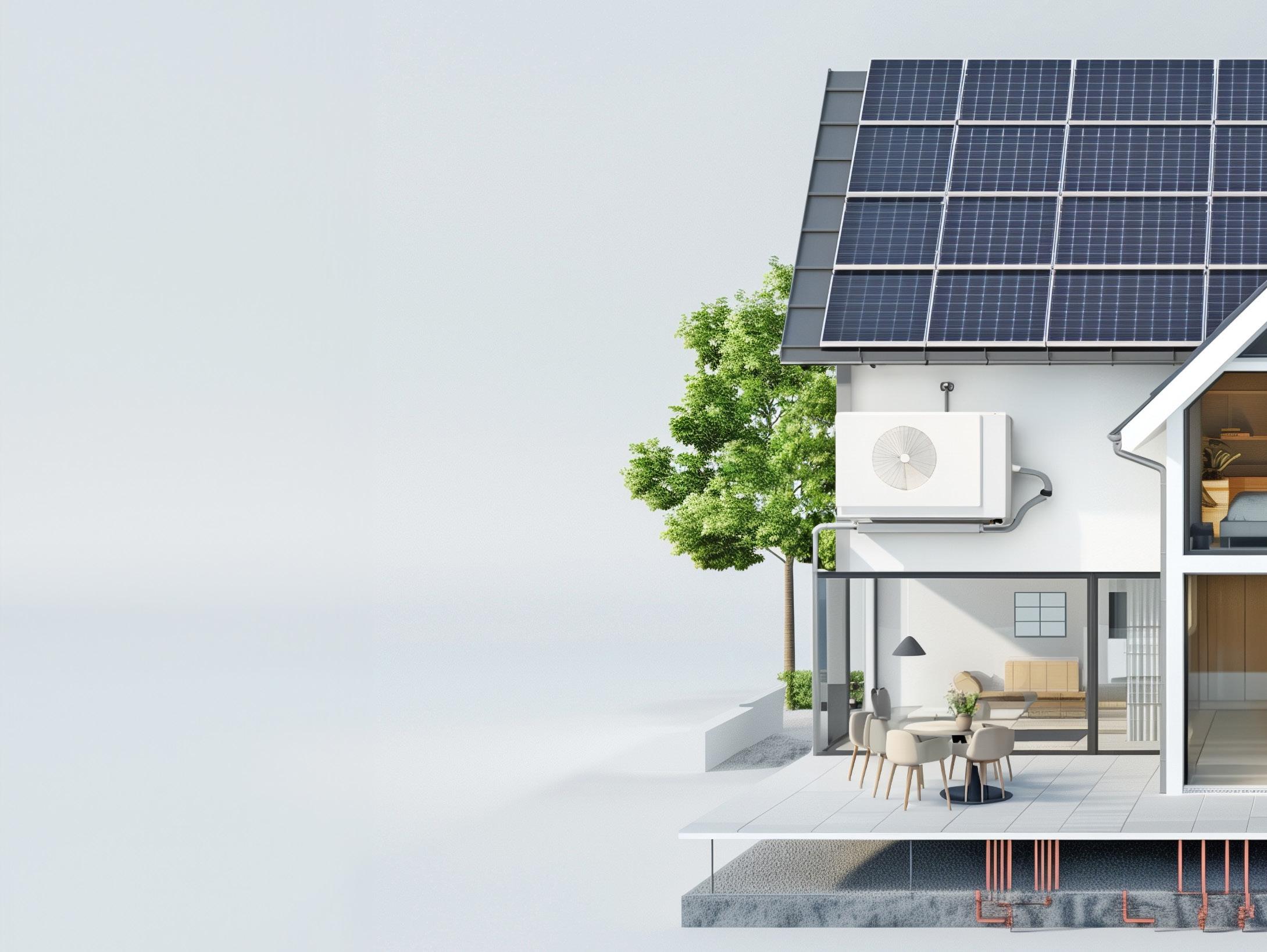

Shahid Rahman, EMEA – Data Centre Strategic Account Lead (Engineered IT Cooling Solutions) at Mitsubishi Electric, explores how heat reuse can revolutionise data centre efficiency.
In our digital age, data centres are pivotal infrastructure. They facilitate the flow of information that we rely on in almost every aspect of our lives, including commerce, government, education and even entertainment. However, their high level of energy consumption and environmental impact pose significant challenges, and data centre users are increasingly concerned with their carbon footprint.
This means there is an urgent need to decarbonise data centres so that the UK can reach net zero by 2050. Other countries have already started to implement measures to reduce their carbon footprint. For example, the Dutch government banned new data centre hyperscale projects for 9 months, and the Irish government has introduced policies to scrutinise data centres more closely.
However, slowing down or halting data centre development is not the only way to minimise the environmental impact. Embracing heat recovery solutions is another method to make data centres more energy efficient and sustainable and move towards a decarbonised future. Such solutions allow data centre developers and operators to provide robust, fault-free services while reducing energy use and emissions.
One way to minimise the carbon footprint of data centres is by reusing the heat that they generate. Previously, the priority has been to use cooling technologies that meet energy-reduction targets. Now, we must shift the focus to the reuse of heat energy that actually gives data centres the potential to decarbonise further and build a more sustainable future. In fact, excess heat from data centres can be used to heat other nearby buildings and homes, and provide them with a greener heating source. Certain countries have already started leading the way in this area. For example, the new German Energy Efficiency Act has made reusing ‘waste’ heat a requirement and has set an ambitious target of data centres achieving 10% heat reuse by 2026 and 20% by 2028.
When looking at linking the data centre to a new or existing heat network, heat mapping is the first step

Depending on a data centre’s heat output and location, several approaches to heat recovery can be applied. One is district heating and cooling as a service, which consists of having a heat pump recycle the water from the district heat network to cool the data centre. The heat pump then collects the waste heat from the cooling activity and pushes it to the city network. The reheated hot water from the data centre is combined with the water in the general heat network, increasing the return temperature. Overall, less energy is consumed across the whole heat network, and energy costs and the carbon footprint are reduced.
Heat reuse has important benefits, and many leading data centre developers and owners are embracing this innovative approach. For example, at Amazon’s Tallaght data centre in Dublin, the heat generated by servers is transferred to an air-handling unit and then recycled to warm water. The water is then directed to an energy centre outside the warehouse, where the temperature is further increased using heat pumps. As a result, carbon dioxide emissions are reduced by 1,500 tons, and over 505,000 square feet of local public buildings, 32,800 square feet of commercial buildings, and 133 apartments are provided with heating.
Reducing the environmental impact of data centres requires green technologies such as heat pumps and heat networks which provide heating and hot water more efficiently.
In particular, heat pumps are essential to make the most of waste heat. Data centre output heat is around 30°C to 35°C. Heat pumps can use water at this temperature as a heat source, bringing the water to 70°C or even 80°C. This heat energy can be used in the data centre (or nearby buildings and homes) to meet domestic hot water (DHW) demand in washrooms and showers, for example.
Alternatively, when it comes to providing water to homes located further from the data centre, the heat energy can be used on a wider scale in heat networks connected to the city. Households can then be provided
with heat and hot water via a large network of pipes. The Climate Change Committee (CCC) estimates that 18% of UK heat could come from heat networks by 2050 (up from 2% today).
Data centre developers and operators must keep in mind that there are a number of considerations to make before embracing heat reuse. When looking at linking the data centre to a new or existing heat network, heat mapping is the first step. This is a way to ensure that there is an outlet for the waste heat a reasonable distance from the data centre – or that there already is a heat network that can use extra capacity.
The second step is to evaluate the cooling demand of the data centre across the year and to size and specify cooling equipment. For example, buildings that are close to the data centre may not have high heat requirements, while heat networks which supply domestic customers have higher and more predictable heat demand profiles. Additionally, buildings such as hospitals, schools and leisure centres are also sources of heat demand that must be considered.
The ideal solution is a water-to-water heat pump or a heat pump chiller. The heat output of the heat pump can then be calculated to establish the annual heat output profile. So, when setting out these projects, designers are looking for a successful match of data centre heat output and local heating requirements.
By repurposing excess heat using heat pump technology and district heating networks, not only can data centres enhance energy efficiency, but also contribute to advancing sustainable heating solutions for communities. So, as we navigate the transition to a decarbonised future, it is imperative to recognise that data centres are not simply big energy users, but have a crucial role to play in paving the way towards a greener, more resilient future.


TMichael Sagar, Director of Marketing, Energy Systems at EnerSys, explains how lead-acid batteries can support the environmental goals of data centres.
he environmental impact of data centres is a growing concern, with the International Energy Agency (IEA) reporting that this sector accounts for 1-1.5% of global electricity use. Given this, data centre operators must prioritise environmental factors when choosing UPS battery units.
During mains power outages, data centres require a reliable source of standby power for their critical infrastructure. One of the commonly deployed battery chemistries for this purpose is lead-acid. These batteries are often favoured due to their cost-effectiveness and high performance, contributing significantly to the global lead-acid battery market, which, according to Fortune Business Insights, is projected to grow from $45.84 billion in 2023 to $65.18 billion by 2030. Furthermore, lead batteries are
recyclable, with a recycling rate of more than 99% in certain countries.
Technological advancements have continually improved lead-acid batteries, making them a reliable choice for UPS systems. Indeed, manufacturers have introduced valve-regulated lead-acid batteries that require minimal maintenance and offer enhanced safety features. While some battery vendors compare alternative battery chemistries to conventional lead-acid technology, it’s important to note that advanced lead-acid batteries can offer superior performance in terms of electrical parameters, operational longevity, battery recycling, and renewable energy integration.
Efficient electricity consumption is crucial for environmentally-conscious data centre UPS installations. Batteries that can charge quickly and efficiently reduce the power drawn from the mains supply grid. The architecture of some lead-acid data centre batteries ensures that the associated electrical demand is maintained to a minimum.
Additionally, accelerated charge rates are important from an operational perspective. Building up the State of Charge (SoC) rapidly prepares the data centre for the potential of subsequent outages in quick succession. Selecting batteries that support this is particularly important to site resilience.

The operating lifespan and performance of a battery will be limited by grid integrity, as explained later in this article. In an open grain grid structure, corrosion takes place. Acid exposure at the grid boundaries leads to a reduction in current carrying capacity, grid growth (through corrosion), and loss of contact between the grid and active material leading to the reduction of the active material area.
Increased battery replacement frequency and associated labour costs emphasise the importance of selecting durable energy storage options. This achieves a more favourable total cost of ownership (TCO) while also reducing waste and lowering recycling needs.
Disposing of batteries at the end of their usable life is an environmental concern. The Batteries Regulation is the first piece of European law that addresses and unifies sourcing, production, use, and recycling under a single legislative framework. Starting in 2025, targets will be introduced gradually for recycled content, material recovery, and recycling efficiency. Investigating the recyclability of battery types is, therefore, essential.
Lead-acid batteries are highly recyclable. According to the Battery Council International (BCI), the trade association for the North American battery industry, the three main components of a lead-acid
Batteries that can charge quickly and efficiently reduce the power drawn from the mains supply grid
battery (lead, plastic and acid) are 100% recyclable.
Operators should aim to improve their facilities’ environmental sustainability. A primary way to do this is by reducing the power that the IT consumes and lowering the carbon content of the utility supply. One way to effectively do this is by storing renewable energy in on-site battery energy storage systems, taking generated power from on-site solar panels and nearby wind turbines. This will supplement the power requirements of the data centre facility using low carbon solutions, improving site sustainability.
One appealing architecture to data centre operators is Thin Plate Pure Lead Battery (TPPL) technology. TPPL batteries offer elevated performance and extended working lifespans, with a typical design life of over 12 years when operated at a temperature of 20°C.
One of the key advantages of TPPL batteries is their significantly higher charge acceptance compared to conventional lead-acid batteries, allowing quick replenishment of the SoC. TPPL batteries are also highly efficient when operating in float mode, requiring up to 33% less electricity than other lead-acid batteries to maintain their charge. Their thinner plates also enable greater energy densities, which is a benefit at space-constrained sites.
Moreover, TPPL batteries are less prone to grid corrosion due to their pure lead grids, resulting in better structural integrity and higher efficiency. This durability makes TPPL batteries suitable for an on-site renewable energy storage system (ESS). As electricity supply networks become more dependent on renewable sources that are inherently more prone to fluctuations in power generation, batteries at data centre sites could be used to help maintain grid stability.
Prolonging the working lifespan of batteries, as TPPL batteries can do, may lead to considerable total cost of ownership benefits for data centre operators. TPPL batteries can operate at higher ambient temperatures, which lowers TCO further by minimising cooling costs. Additionally, TPPL batteries need less maintenance compared to conventional battery types and have lower ventilation requirements, which reduces operational expenses and keeps TCO down.
As data centre workloads continue to grow, operators must enhance operational capacities while minimising their facilities’ environmental impact. TPPL batteries offer a compelling backup power solution with cost-effective upfront costs, minimal ancillary expenses, fast charging performance, prolonged lifespan, and high recyclability. By choosing TPPL batteries, data centre operators can align their operations with industry-leading environmental standards and contribute to a more sustainable future.


Paul Mackay, Vice President Cloud – EMEA & APAC at Cloudera, explores how data is changing lives across the globe.
Data has long been one of the most valuable assets any organisation possesses – and now, it’s growing at an unstoppable rate. The volume of data created, captured, copied and consumed worldwide is projected to hit 147 zettabytes in 2024, a 23% year-on-year increase.
More data means more potential use cases. In recent years, data has gone from something that was collected and applied to relatively simple tasks, to an asset that is now genuinely changing lives in areas such as drug discovery, personalised healthcare treatments and the development of smarter, greener cities.
However, the increase in the scale of data is amplifying the challenge of storing and analysis. New approaches are emerging to manage and extract value from huge data repositories. But only those organisations with the capability to manage the deluge of data effectively will fully realise the benefits and create meaningful use cases.
power of effective data management
Unlike many precious commodities, the value of data is defined not by its scarcity, but how it is used. Managing data effectively is increasingly important – and challenging – given today’s highly complex IT environments that span on-premises systems and private/public clouds. This hybrid and multi-cloud approach means data is often geographically dispersed and siloed by different technology infrastructures and policies.
Organisations need a cost-effective way to get the right data to the right people at the right time – empowering staff to make informed decisions. And organisations must do so in a consistent, seamless manner that enables staff to self-serve data easily within the confines of a complex patchwork of data security and governance regulations. To achieve this, organisations must look for the right architectures to suit their business needs.
A data fabric architecture is useful for preparing and managing data at scale. Open data lakehouses combine the storage capabilities of a data lake with the structure and accessibility of a data warehouse via the cloud. This offers the added benefits of near unlimited storage, scalable virtualised compute power, cost efficiency and high resiliency.
Organisations able to build a data architecture that harnesses the power of data will be able to explore new use cases. From smart cities to finance, almost every industry is finding ways to make the most of their data: • Making smart cities smarter: Modern hybrid cloud data architectures enable governments and other stakeholders to ingest,

store and analyse large volumes of unstructured data. By reaping the energy efficiency benefits of cloud and enhancing access to data-driven insights, organisations can reduce carbon emissions while analysing real-time data on events like crime and traffic congestion.
• Delivering lifesaving treatment faster: From accelerating data processing to speed up the search for organ donors, to using predictive analytics to personalise treatments, the power of the cloud and data is saving lives. In pharmaceuticals, drug companies able to unleash the combined force of data and AI are also optimising R&D and drug discovery to bring life-saving treatments to market faster.
• Metamorphic manufacturing: Hybrid cloud and modern data architectures have been deployed to support IoT and enhance production and supply chains for Industry 4.0 sites. With greater insight into inventory, and more agile processes in place, manufacturers can pivot fast to minimise supply chain disruption and react to changing market demands. That means getting the products that users want into their hands quicker.
• Keeping customers connected: By tearing down traditional silos and supporting AI analytics, modern hybrid architectures give telcos a 360-degree view of their customers, network operations and services. These insights enable faster fault detection for improved network performance, and more accurate customer profiling for an optimised end-to-end experience.
• Truly personal finance: By analysing real-time contextual data from customer interactions, banks can curate relevant experiences across all channels. GenAI promises a step-change in the capabilities of complex
Hybrid cloud and modern data architectures have been deployed to support IoT and enhance production and supply chains for Industry 4.0 sites
actions, such as enhancing customer chatbots, while predictive analytics can analyse transactions in real-time to prevent suspicious activity and fraud.
This is far from an exhaustive list of the potential benefits that a modern data architecture can deliver. Once organisations are able tap into the wealth of data they create and capture every single second, the door opens to unlimited possibilities.
Business leaders need data to make smarter decisions about their customers and their operations. But as data volumes grow and IT complexity increases, this becomes more challenging. That’s when hybrid and multi-cloud data platforms come into their own: eliminating data silos and supporting rapid, cost-effective access for the right people at the right time.







n today’s fast-paced digital landscape, organisations are under constant pressure to evolve and adapt. Digital transformation has become a near-constant, with companies of all sizes investing significant resources into modernising their operations, processes, and technologies.
Despite the buzz that new and novel technologies bring, it’s crucial not to lose sight of the people that transformation will impact – even in what could be perceived as a pure infrastructure industry, such as data centres. Contrary to popular belief, successful transformation isn’t just about implementing the latest technologies, or streamlining processes. Success comes by understanding and prioritising the needs of the people involved. You should not underestimate the importance of a humancentric approach to digital transformation, internally and externally.
The key focus in any transformation journey is to establish a comprehensive understanding of existing processes and workflows –which will clarify the pain points, strengths, weaknesses, and bottlenecks across the business. This process ensures you establish a holistic view of operations to better understand the critical components and systems that can’t be disrupted, which in turn helps to more effectively plan the transition to new systems and technologies.
It’s impossible to manage this without significant employee engagement. Your people are on the front line, living the day-to-day operations that you’re attempting to improve. They are ultimately the best-placed people to inform your digital transformation strategy, and their input can foster a sense of ownership and buy-in to the business – not only improving engagement, but aligning their goals with the broader objectives of the organisation.
There is of course a balance to be maintained to obtain fresh
perspectives and ensure we challenge the ‘we have always done it this way’ thinking. Enabling success involves challenging the status-quo, pushing people in a supportive way to think differently to existing problems. This can be done via setting up cross-functional groups, obtaining views from across different industries and engaging within the wider industry itself.
Simply put, an understanding of what people need from technology should be a priority, and we need to support and skill our people to undertake these tasks. User-centric design principles and a customercentric approach are foundational to success.
A human-centric approach will involve user testing and gathering feedback to refine chosen solutions, ensuring they’re user-friendly and fit for purpose. Similarly, key performance indicators (KPIs) should be focused not only on technical benchmarks but also on measures of employee satisfaction and wellbeing, and customer experience.
Diversity within teams also plays a crucial role in driving successful digital transformation. Including a variety of perspectives and experiences from different industries and ways of life in the process brings valuable insights to the table, enabling organisations to be innovative in the solutions to cater to a broader range of users. Communication is obviously key to leveraging this diversity, fostering an environment where diverse opinions are welcomed, and feedback is actively encouraged.
Cross departmental communication will also ensure gaps in processes are covered and give confidence of working solutions. We have all seen and experienced situations where one department implements successful change for themselves, but without considering the impacts up or downstream – which unfortunately takes the whole business backwards

Leadership commitment is another critical factor. Open communication channels, a culture that values honest communication, and a deep understanding of both team and customer needs are all integral to successful digital transformation. As such, leaders must clearly communicate the rationale behind decisions, ensuring that their people understand them and feel empowered to raise any concerns.
At its core, digital transformation is about more than just implementing new technologies or automating existing processes. It’s about bringing together the perspectives needed to reshape the way organisations operate, interact with customers, and deliver value – all in a stable controlled manner.
Establishing principles for a human-centric digital shift
It’s clear at this point that digital transformation requires a lot from an organisation’s leaders. They must be able to simultaneously drive progress while also actively listening to internal and external needs, recognising their feedback and tackling any worries.
To remain focused, the following principles will help leaders stay the course of a human-centric digital transformation:
• Target pain points: solutions should address the pain points raised at the outset, foster shared goals and engagement across departments. Solutions should be challenged to be optimal and take learnings from a variety of sources so not only are they fit for now, but also for the future.
• Continuous feedback: implementing feedback loops throughout the transformation process through prototype testing, surveys and wider trials will allow for constant evolution of ideas in an agile manner. The world constantly evolves and so must our thinking and approach.
• Employee support and training: providing support and training
Including a variety of perspectives and experiences from different industries and ways of life in the process brings valuable insights to the table
before, during and after the transformation facilitates quicker adaptation to new thinking, processes and tools, reducing resistance and enhancing capabilities for long-term use.
• People-based metrics: success measurement should include peoplebased metrics, aligning with the growing focus on wellbeing and a sense of belonging in a hybrid working environment. How any change is implemented is just as important as to what the change was.
• Cultural change: throughout the transformation, a cultural shift occurs naturally, with users more open to promoting ideas, recommending enhancements, and solving problems down the line –take note and iterate with this change.
Ultimately, following these principles can drive a more humancentric approach to digital transformation leading to real value and efficiency across the business, while simultaneously helping to foster an environment where people feel their voice is valued.
Any transformation involves users and businesses transcending through the change curve, and there is no quicker way to do this than by placing people at the centre of the transformation process. Through this we ensure that technology is a catalyst for positive change, for all.




The Easy UPS 3-Phase Modular UPS delivers robust power protection and high availability in a cost-optimized, 50-250 kW 400V package ideal for a wide range of data centres and other business-critical applications
• Innovative Live Swap technology for downtime-free upgrades.
• Compact footprint with scalability.
• Green Premium-certified UPS offers a sustainable performance by design.
• Easy to install, maintain and service
Scan to learn more